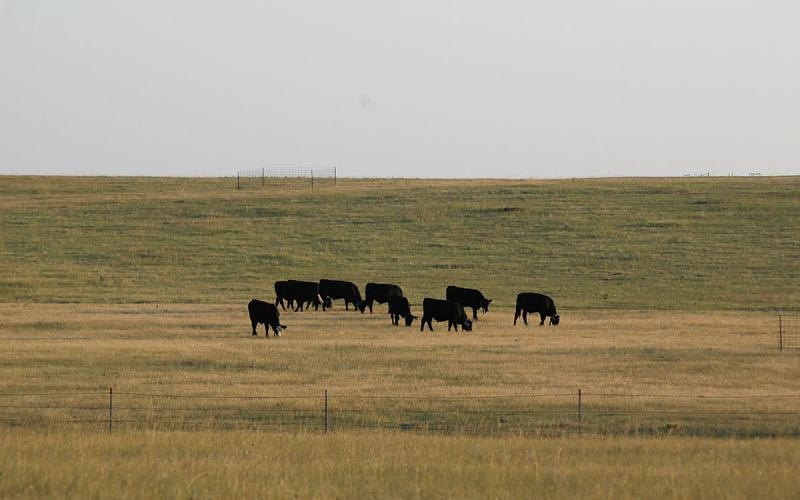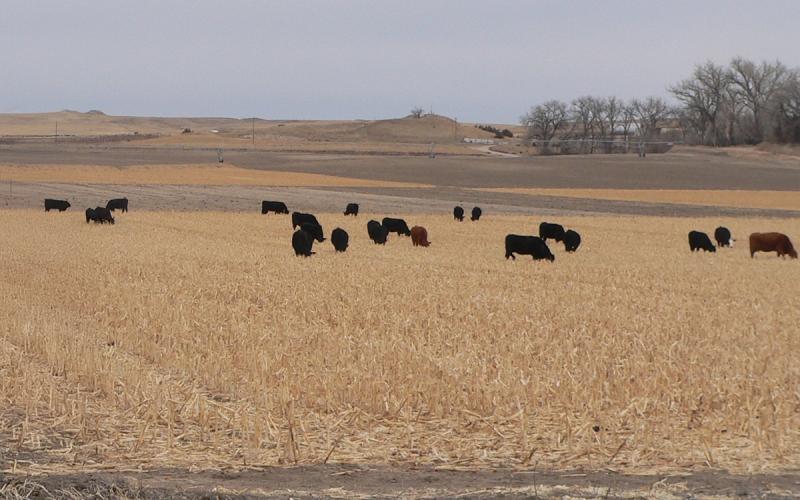Whether because of reduced forage production caused by drought, or increased competition for grazing acres, feeding lactating cows in a drylot is being at least considered as an option by more ranchers. In some pasture rent markets the total cost per day for drylotting pairs is similar to or even lower than the total costs on pasture. When feed supplies are short, it may be more economical to send the cattle to a drylot facility rather than to purchase hay or try to find pasture elsewhere.
Nutrition Considerations
From a nutritional standpoint, drylotting cows is not particularly complicated. A 1400 pound cow that would have a 30 pound peak milk production would require a diet containing about 10% crude protein and 58% TDN (energy). There are a number of different feedstuff combinations that could be used to meet those requirements.
The researchers at NDSU Carrington Research Extension Center have had considerable experience in feeding and managing a drylot cow herd; some of their example rations are listed in Table 1. Every situation is different and the most economical feedstuffs can vary greatly. Producers considering using an unfamiliar feedstuff should consult an Extension specialist or nutritionist to determine if there are factors that limit how much can be fed in a ration.
| Ingredient |
|
|
|
|
|
|---|---|---|---|---|---|
| Corn Silage |
|
|
|
|
|
| Alfalfa-Grass Hay |
|
|
|
|
|
| Grass Hay |
|
|
|
|
|
| Straw or Corn Stalks |
|
|
|
|
36 |
| Wheat Midds |
|
|
|
|
|
| DDGS |
|
|
|
|
|
| WDGS |
|
|
|
|
|
a These diets should be considered examples of upper limits of distillers grain and assume relatively lower levels of fat and sulfur in the co-product used.
(Adapted from Drylot Beef Cow/Calf Production, V.L. Anderson and S.L. Boyles, NDSU Publication AS-974, 2007)
Feeding Strategies
Efficiently utilizing lower quality roughages is a common strategy for a drylot ration when better hay grades are exceptionally high priced. Those rations tend to work best with a total mixed ration combining lower quality feeds with supplements, co-products, or silages to increase palatability and intake. Another advantage is the ability to force feed a properly balanced mineral supplement containing an ionophore.
If a total mixed ration can’t be easily used because of equipment or logistics, managing hay waste and intake will be critical to controlling costs. Maintaining calf health can be a major challenge, especially in hot and dusty conditions. Aside from following a veterinarian’s recommendations for vaccination protocols, another management practice that deserves a look is a creep pasture. This not only allows the calves to get away from the feedlot environment, but should provide the calf the ability to graze some high-quality forage, assuming that there has been enough rain to support sufficient grass growth.
Another option that fits well with drylot cow/calf production is early weaning. The calves are already accustomed to that environment and have been eating the cow’s diet as well as any creep feed that’s been provided. It may be effective to wean off the calves and send the cows to their home range if there is sufficient forage available or to graze resources such as crop residues or cover crops.
Finally, many cows will be drylotted this year in some kind of custom arrangement, where cattlemen without enough feed send their cattle to where feed is available. It’s very important that everyone communicates and knows what the other party expects. Once an agreement is reached, get it in writing. That might not eliminate the chances of disagreements, but at least no one is relying on memory. There will be enough challenges this year in dealing with weather and feed costs without adding difficulties because of miss-communication.

